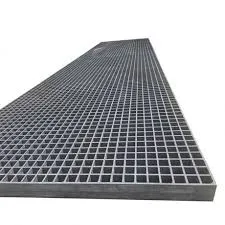
-
 Afrikaans
Afrikaans -
 Albanian
Albanian -
 Amharic
Amharic -
 Arabic
Arabic -
 Armenian
Armenian -
 Azerbaijani
Azerbaijani -
 Basque
Basque -
 Belarusian
Belarusian -
 Bengali
Bengali -
 Bosnian
Bosnian -
 Bulgarian
Bulgarian -
 Catalan
Catalan -
 Cebuano
Cebuano -
 China
China -
 China (Taiwan)
China (Taiwan) -
 Corsican
Corsican -
 Croatian
Croatian -
 Czech
Czech -
 Danish
Danish -
 Dutch
Dutch -
 English
English -
 Esperanto
Esperanto -
 Estonian
Estonian -
 Finnish
Finnish -
 French
French -
 Frisian
Frisian -
 Galician
Galician -
 Georgian
Georgian -
 German
German -
 Greek
Greek -
 Gujarati
Gujarati -
 Haitian Creole
Haitian Creole -
 hausa
hausa -
 hawaiian
hawaiian -
 Hebrew
Hebrew -
 Hindi
Hindi -
 Miao
Miao -
 Hungarian
Hungarian -
 Icelandic
Icelandic -
 igbo
igbo -
 Indonesian
Indonesian -
 irish
irish -
 Italian
Italian -
 Japanese
Japanese -
 Javanese
Javanese -
 Kannada
Kannada -
 kazakh
kazakh -
 Khmer
Khmer -
 Rwandese
Rwandese -
 Korean
Korean -
 Kurdish
Kurdish -
 Kyrgyz
Kyrgyz -
 Lao
Lao -
 Latin
Latin -
 Latvian
Latvian -
 Lithuanian
Lithuanian -
 Luxembourgish
Luxembourgish -
 Macedonian
Macedonian -
 Malgashi
Malgashi -
 Malay
Malay -
 Malayalam
Malayalam -
 Maltese
Maltese -
 Maori
Maori -
 Marathi
Marathi -
 Mongolian
Mongolian -
 Myanmar
Myanmar -
 Nepali
Nepali -
 Norwegian
Norwegian -
 Norwegian
Norwegian -
 Occitan
Occitan -
 Pashto
Pashto -
 Persian
Persian -
 Polish
Polish -
 Portuguese
Portuguese -
 Punjabi
Punjabi -
 Romanian
Romanian -
 Russian
Russian -
 Samoan
Samoan -
 Scottish Gaelic
Scottish Gaelic -
 Serbian
Serbian -
 Sesotho
Sesotho -
 Shona
Shona -
 Sindhi
Sindhi -
 Sinhala
Sinhala -
 Slovak
Slovak -
 Slovenian
Slovenian -
 Somali
Somali -
 Spanish
Spanish -
 Sundanese
Sundanese -
 Swahili
Swahili -
 Swedish
Swedish -
 Tagalog
Tagalog -
 Tajik
Tajik -
 Tamil
Tamil -
 Tatar
Tatar -
 Telugu
Telugu -
 Thai
Thai -
 Turkish
Turkish -
 Turkmen
Turkmen -
 Ukrainian
Ukrainian -
 Urdu
Urdu -
 Uighur
Uighur -
 Uzbek
Uzbek -
 Vietnamese
Vietnamese -
 Welsh
Welsh -
 Bantu
Bantu -
 Yiddish
Yiddish -
 Yoruba
Yoruba -
 Zulu
Zulu
Composite Material Flanges and Blinds for Enhanced Industrial Applications and Performance
Understanding FRP Flanges and Blinds A Comprehensive Overview
In contemporary engineering practices, the emphasis on durability, lightweight materials, and corrosion resistance has led to the increasing use of Fiber Reinforced Polymer (FRP) composites. Among the various applications of FRP, flanges and blinds are critical components extensively used in various industries, particularly in chemical, oil and gas, and wastewater management sectors. This article aims to provide an in-depth understanding of FRP flanges and blinds, their properties, applications, and advantages over traditional materials.
What are FRP Flanges?
FRP flanges are structural components made from fiber-reinforced polymers, which are composites that incorporate a polymer matrix reinforced with fibers, typically glass, carbon, or aramid. These flanges are used to connect two sections of a pipeline or to attach equipment to piping systems. They provide a reliable seal and support at various pressure levels and temperatures.
The primary advantage of FRP flanges lies in their corrosion resistance. Unlike traditional metal flanges, which may corrode or degrade when exposed to harsh chemicals and environments, FRP flanges maintain their integrity, ensuring longevity and reliability. Moreover, FRP flanges are much lighter than their metal counterparts, facilitating easier handling and installation.
Exploring FRP Blinds
On the other hand, FRP blinds are flat plates used to block off pipelines or create a barrier in a system. They are typically employed for maintenance purposes, allowing for safe and efficient servicing of equipment without requiring the entire system to be shut down. Like flanges, FRP blinds are resistant to a variety of corrosive substances, making them ideal for use in chemical plants and other industrial settings.
FRP blinds can also be customized in terms of size and shape, allowing for flexible application in various systems. Their lightweight nature and ease of installation ensure they can be quickly deployed when needed, minimizing downtime and enhancing operational efficiency.
Applications of FRP Flanges and Blinds
Both FRP flanges and blinds have a wide range of applications across various industries. In the chemical industry, they are utilized where corrosive substances necessitate a robust, corrosion-resistant solution. The oil and gas sector benefits from using these components to handle materials that may otherwise compromise traditional metal fixtures, enhancing safety and reducing the risk of leaks.
frp flange and blind

In wastewater treatment plants, FRP flanges and blinds play a crucial role in managing the flow of effluents and maintaining the integrity of the pipeline systems. Their use mitigates the risk of contamination and ensures that the treatment processes continue smoothly.
Advantages of FRP Over Traditional Materials
The transition from traditional materials like steel and aluminum to FRP in constructing flanges and blinds is driven by several key advantages
1. Corrosion Resistance FRP's ability to withstand harsh chemicals and environmental conditions prolongs the lifespan of components and reduces maintenance costs.
2. Lightweight The low density of FRP makes it easier to handle, transport, and install, leading to reduced labor costs.
3. Low Thermal Conductivity Unlike metals, FRP does not easily transfer heat, which can help in maintaining temperature stability in piping systems.
4. Customization FRP can be molded into various shapes and sizes, allowing for tailored solutions to fit specific requirements.
5. Environmental Impact With their longevity and reduced maintenance requirements, FRP components contribute to more sustainable practices in industrial operations.
Conclusion
FRP flanges and blinds represent a significant advancement in engineering materials, offering unique benefits suited to the demands of modern industries. Their exceptional resistance to corrosion, lightweight nature, and customizable features make them ideal choices for various applications. As industries continue to evolve, the reliance on innovative materials like FRP will undoubtedly play a vital role in enhancing operational efficiency, safety, and sustainability in engineering practices. By understanding the advantages and applications of FRP components, engineers and industry professionals can make informed decisions that improve their systems and processes.









